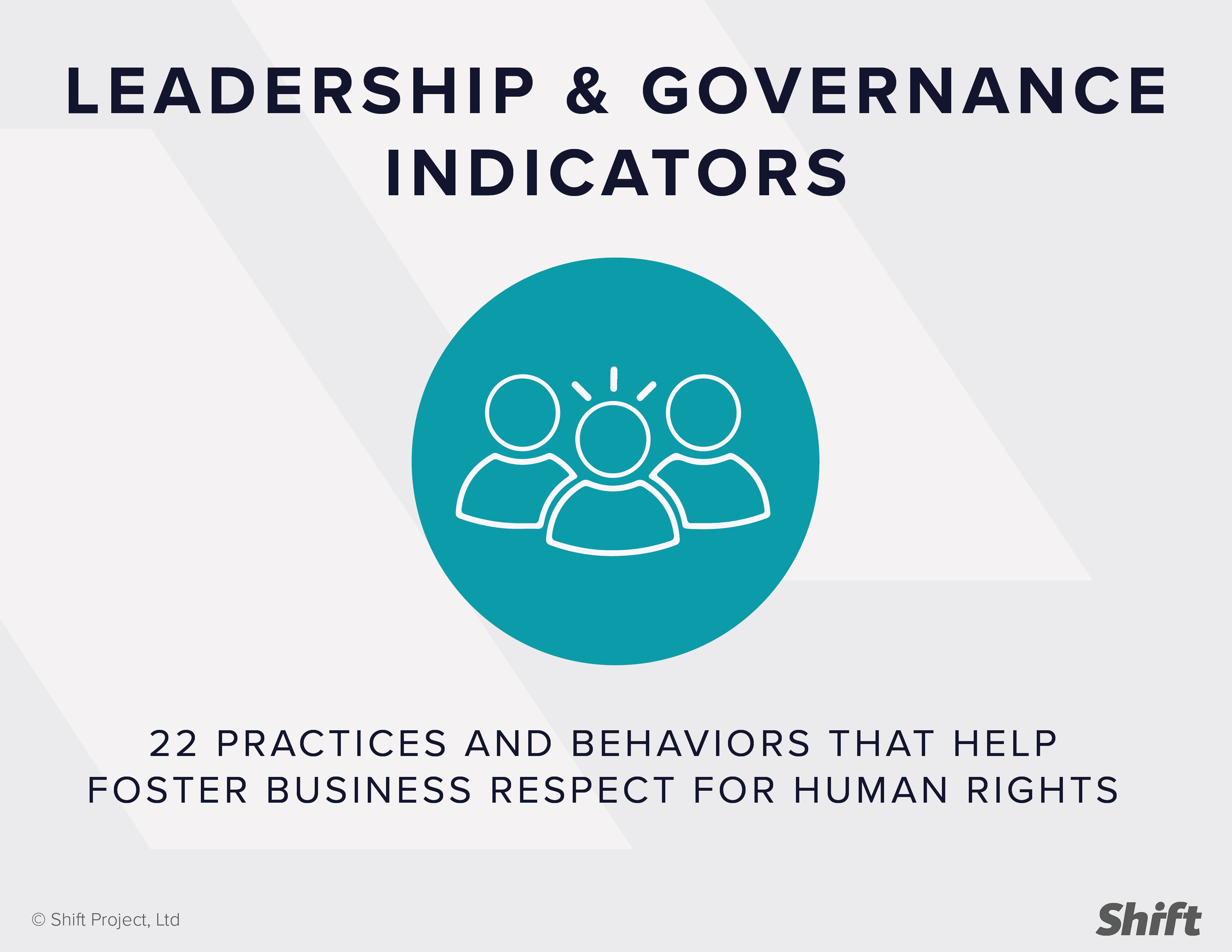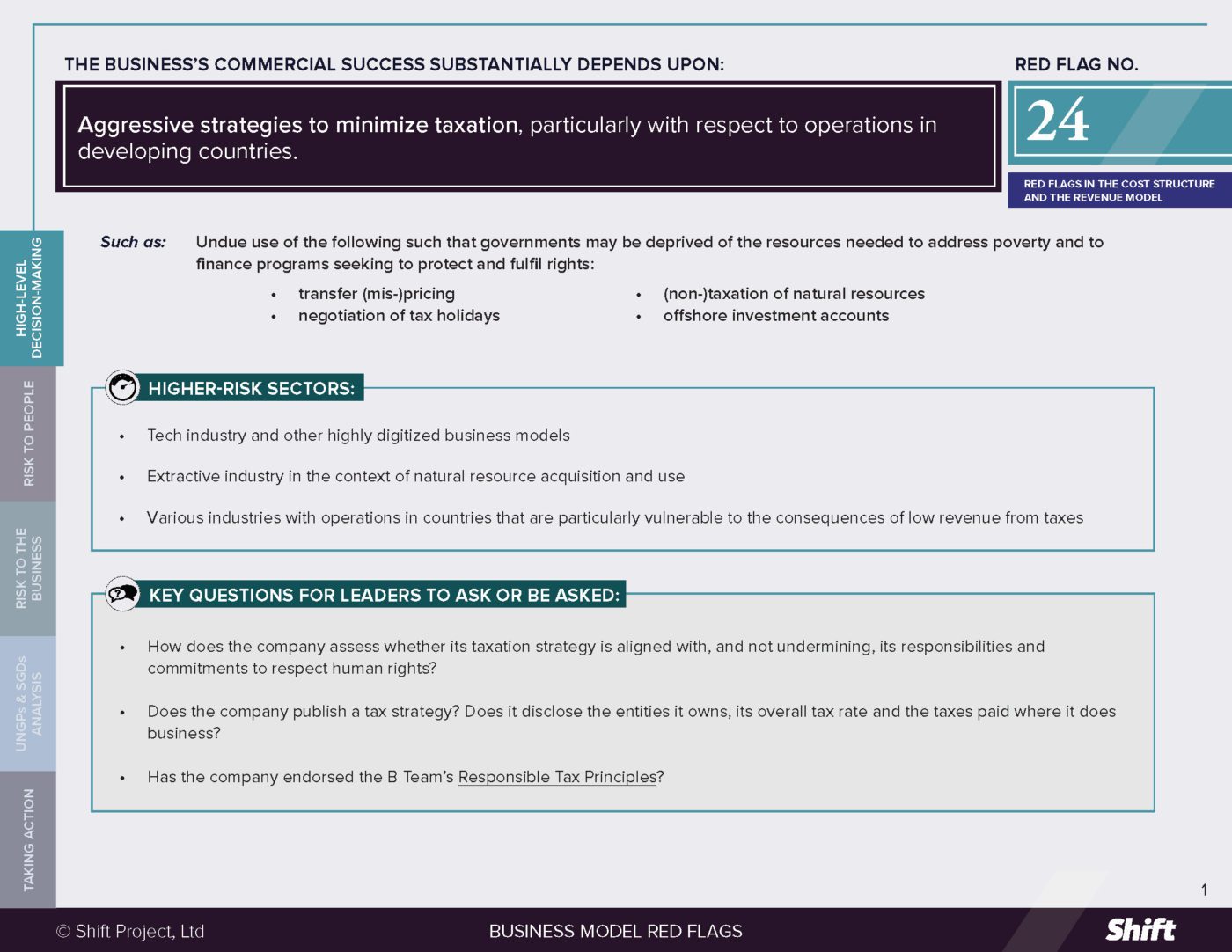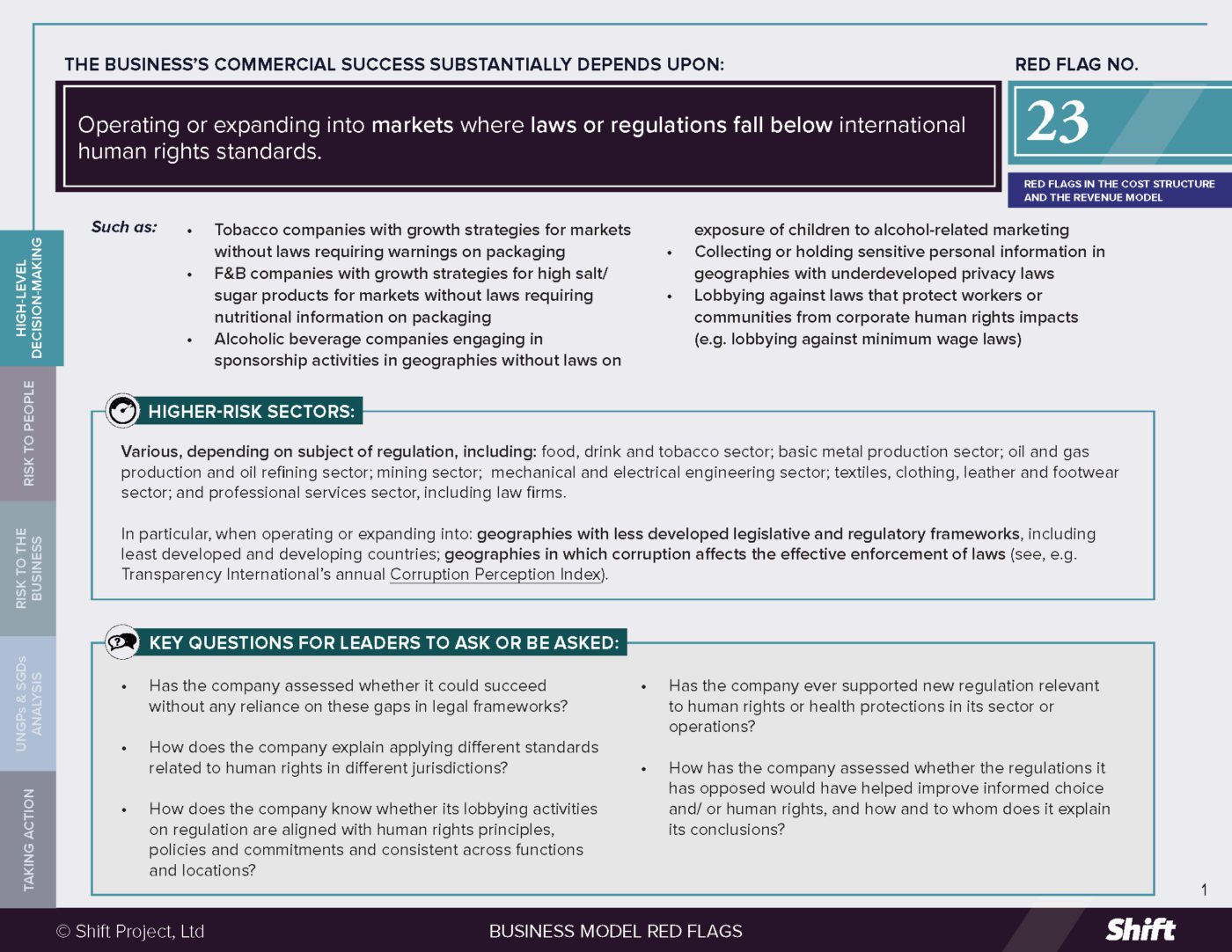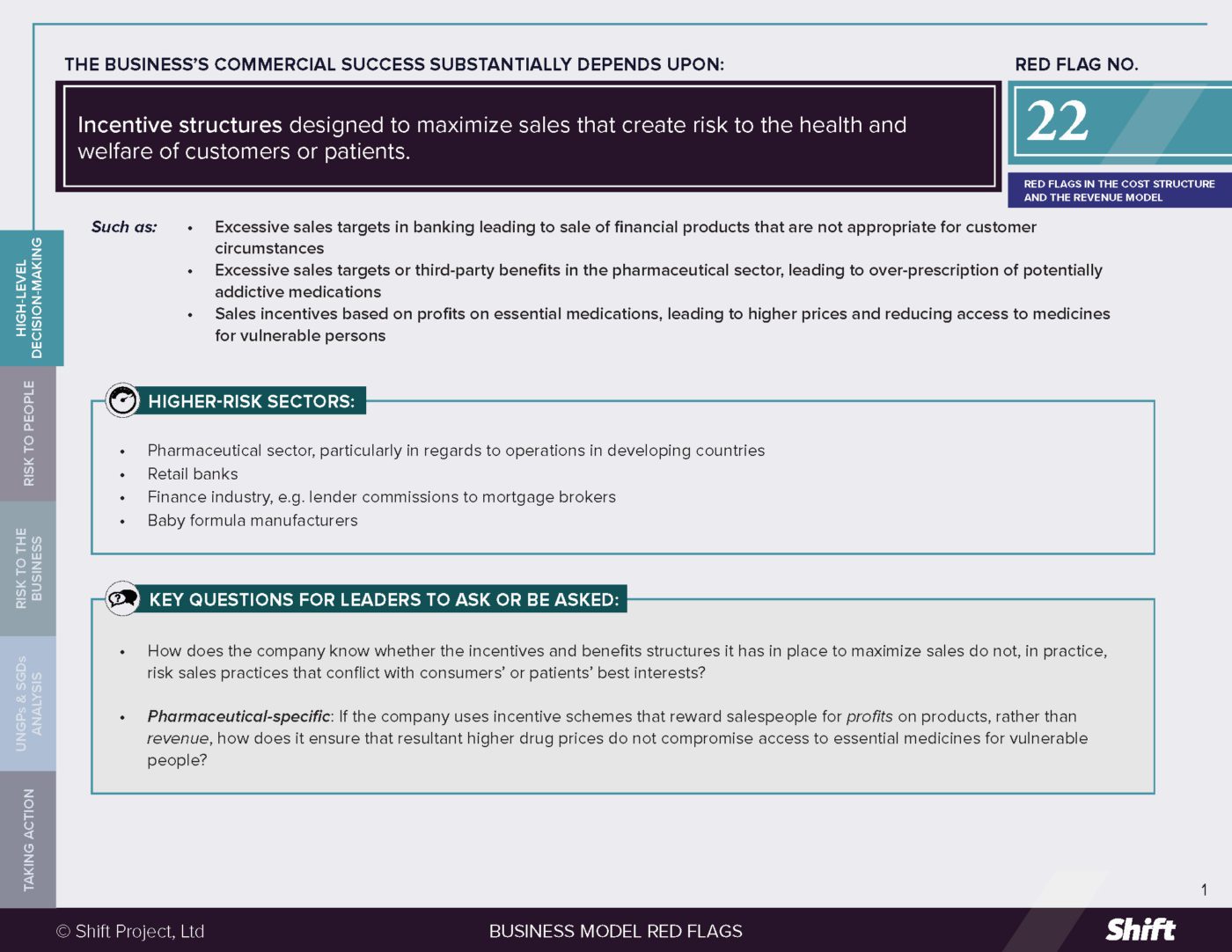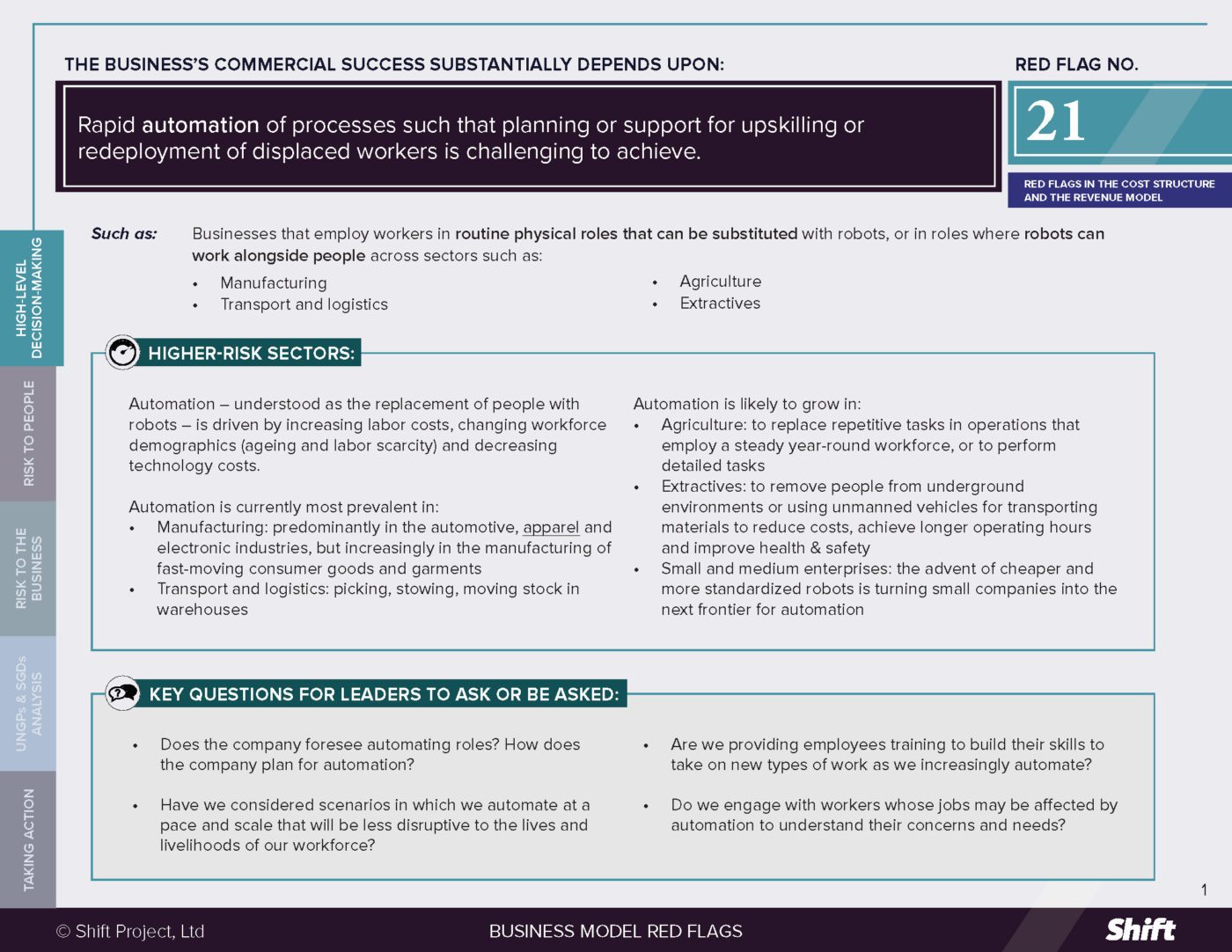There are a total of 22 indicators, divided into two categories:
(To see an overview chart with all 22 indicators, click HERE)
And each indicator is organized into three levels:
Level One: Overview
This includes:
- Explanation or an overview of the indicator and its relevance for embedding organizational behaviors, and robust due diligence practices that support respect for human rights;
- Key Questions for leaders to ask or be asked to aid initial analysis of whether the governance or leadership practice is present in the organization; and
- Connection to Culture that shows the link back to features of a rights-respecting culture.
Level Two: Application
This discusses:
- Types of Application highlighting the types of use, whether inside a company or by those outside a company, to which this indicator particularly lends itself; and
- Sources of Evidence signaling where information related to the indicator might be found, whether in documentation or by soliciting the perspectives of stakeholders.
Level Three: Supporting Indicators
The insight gained from using a single indicator in isolation – however well designed – will have its limits. These limits typically arise from assumptions behind the indicator, for example about pre-existing knowledge, motivations or the practices of others. Users can therefore validate the insight offered by an indicator by combining it with one or more others that address those assumptions. This section provides guidance on which indicators can be used in combination to meet this aim.

 Business Model Red Flags
Business Model Red Flags  Tool for Indicator Design
Tool for Indicator Design 